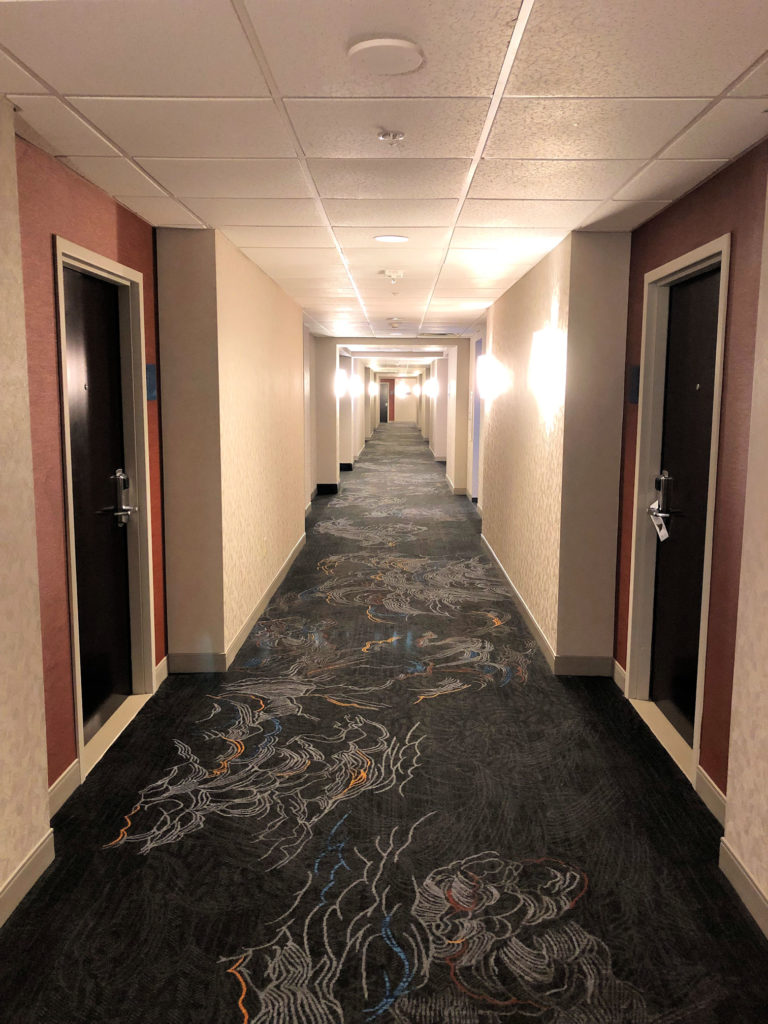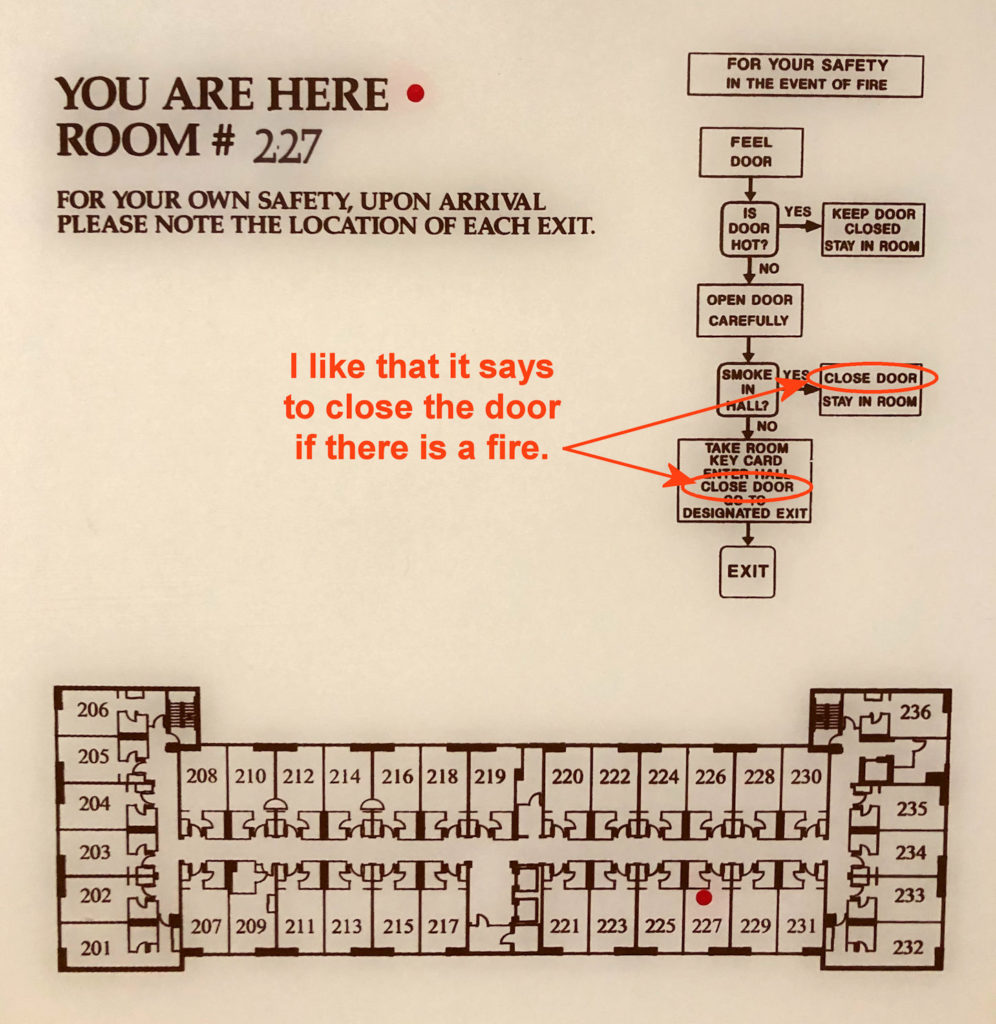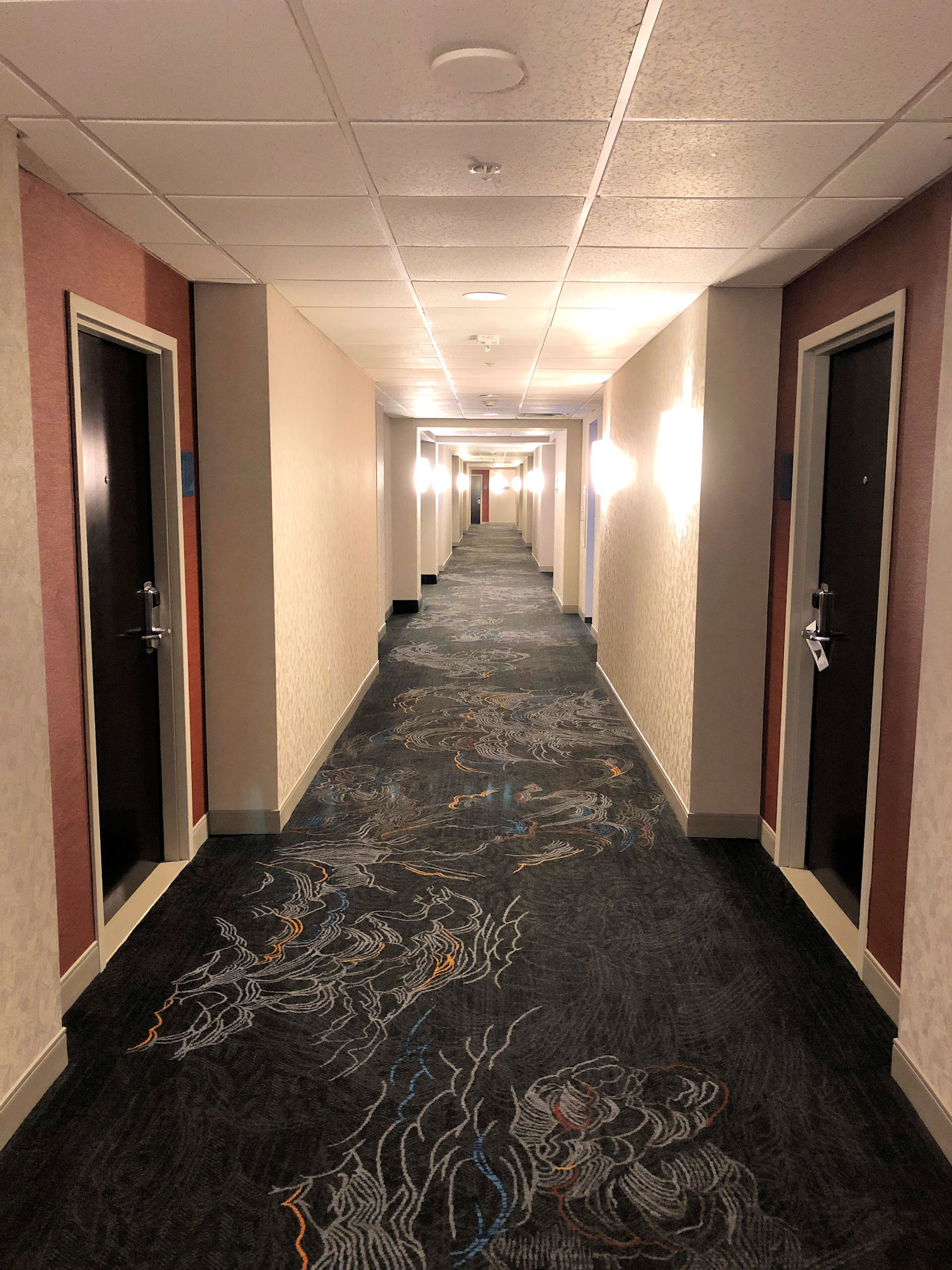 This has been covered within longer articles, but the question continues to come up frequently, so it’s getting its own post:
This has been covered within longer articles, but the question continues to come up frequently, so it’s getting its own post:
Is panic hardware required for the residential floors of hotels and apartment buildings?
I am staying in a hotel right now. On the first floor, there is a restaurant, a large lobby, several meeting rooms, and a swimming pool. Any of those areas with an occupant load of more than 50 people would qualify as assembly occupancies, and any doors that lock or latch serving those spaces are required by the International Building Code (IBC) to have panic hardware. NFPA 101 – The Life Safety Code requires panic hardware for those doors if the occupant load of the room is 100 people or more. In my hotel, the exterior doors on the first floor have panic hardware, as well as the doors serving the pool and the largest meeting rooms. The restaurant is open to the lobby so there are no doors except the exterior doors.
Above the first floor (which has all of the assembly spaces as well as some guest rooms), there are 7 floors that only have guest rooms, housekeeping rooms, vending machines, ice machines, and the occasional guest laundry room. Each floor has an occupant load of more than 50 people. Do the stairwell doors at each end of the corridor require panic hardware / fire exit hardware?
 According to the IBC and NFPA 101, the stairwell doors do not require panic hardware, although some facilities utilize panic hardware where it is not required by code because of durability, security, and ease of use. The reason panic hardware is not required by code for the guest-room floors, is because panic hardware is required for assembly, educational, and high hazard occupancies (depending on the occupant load), and the guest room floors are a residential occupancy.
According to the IBC and NFPA 101, the stairwell doors do not require panic hardware, although some facilities utilize panic hardware where it is not required by code because of durability, security, and ease of use. The reason panic hardware is not required by code for the guest-room floors, is because panic hardware is required for assembly, educational, and high hazard occupancies (depending on the occupant load), and the guest room floors are a residential occupancy.
With hotels and apartment buildings, if the floor only has dwelling units and sleeping units, panic hardware is not mandated by code for the doors serving that area. The same goes for office building floors that only have individual offices, small conference rooms, and support spaces like storage rooms and restrooms. If a building is a residential occupancy or business occupancy, and does not contain any assembly spaces, the model codes do not mandate panic hardware – even at the exterior doors.
The key to the mandate for panic hardware is that the area must be either an assembly, educational, or high hazard occupancy AND must have an occupant load of 50+ or 100+, depending on which code applies. In other types of occupancies, panic hardware is optional, not mandatory.
Make sense?
You need to login or register to bookmark/favorite this content.






I would always error on the side of life safety. Install a panic device .easier to use more durable and less of an obstruction compared to a lever set . Also to make sure the door has a good closing device
I guess there is an exit sign at the end of the corridor ?
Yes, there was an exit signing pointing to the stairwell which was to the side.
– Lori
Another consideration when making this type of evaluation, in addition to the occupancy classification requirements, is the occupant load and the total number of exits. The floor plan provided seems to indicate ~ 36 sleeping rooms per floor. Using a theorectical constant of 2 occupants per sleeping room might indicate a max occupant load of 72 occupants. The floor appears to be served by two remote exit stairs or ~ 36 occupants per stair which is below the threshold of 50 occupants so no panic devices would be indicated based upon this example. Certain jurisdictions do carefully determine the maximum number of occupants per sleeping room and if for example the AHJ permitted 3 occupants per room then the max occupant load would be 108 or 54 served by each stair, above the threshold for when a panic device is indicated.
Hi Larry –
Even if the occupant load is more than 50, or more than 100, the occupancy classification / use group for this floor of the hotel is residential. The IBC and NFPA 101 do not require panic hardware on residential occupancies, regardless of the occupant load.
– Lori